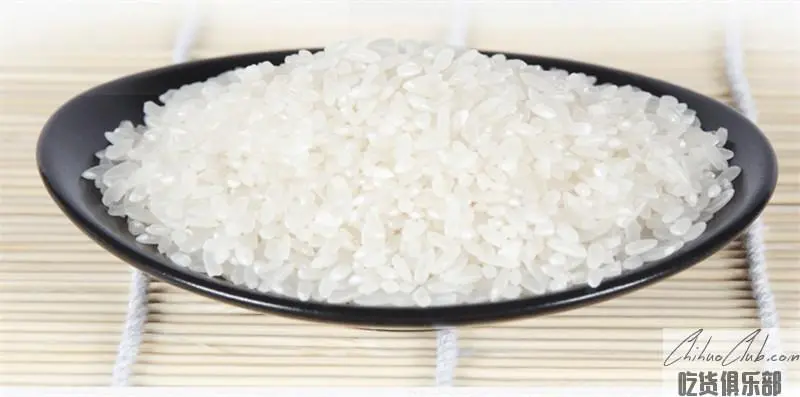
Jiangjiadian Rice
-
Update date::
-
Date of protection::
-
Protected range:The protection scope of Jiangjiadian rice GI products is based on the scope of the “Notice on Determining the Geographical Scope of Protection of Geographical Indication Products of Jiangjiadian Rice” by Liuhe County People's Government of Jilin Province (Liu Zhengwen [2007] No. 27), which is the province of Jilin Province. Jianghedian Township, Liuhe Town, Sanyuanpu Town, Cameback Ridge Town, Xiangyang Town, Ankou Town, Shengshui Town, Hongshi Town, Hengtong Town, Gushanzi Town, Wudaogou Town, Liangshui Town, Luohe County 15 townships such as Tongshan Town, Shijiadian Township and Liunan Township are under the jurisdiction of the administrative area.
-
Related origin:jilin tonghuashi liuhexian liuhexian-jiangjiadianchaoxianzuxiang liuhexian-liuhezhen liuhexian-tuoyaolingzhen liuhexian-xiangyangzhen liuhexian-ankouzhen liuhexian-hongshizhen liuhexian-hengtongzhen liuhexian-gushanzizhen liuhexian-wudaogouzhen liuhexian-luotongshanzhen liuhexian-shijiadianxiang liuhexian-liunanxiang
-
Category:
Jiangjiadian Korean Township is located on the bank of the Santong River in the southeast of Liuhe County, Jilin Province. It is known as the “Hometown of Rice”. Jiangjiadian has a long history of rice planting, rich water resources, excellent ecological environment and suitable climatic conditions.
Jiangjiadian rice quality technical requirements (a) varieties. The high-quality varieties of Jiangjiadian rice quality are selected for the strong resistance of Jizhen 88, Akita Komachi, and Matsuzaka No. 6. (2) Soil conditions. White pulp type paddy soil, alluvial paddy soil, swamp type paddy soil and peat type paddy soil. The soil pH is between 5.0 and 6.8 and the organic matter content is above 2%. (3) Cultivation techniques. 1. Seed treatment: use excellent seed soaking seeds for 5 to 7 days, wash with water and germination. 2. Nursery: dry breeding and thinning. Sowing from April 10th to 15th, 100g to 200g of germination seeds per square meter, timely watering, ventilation and seedlings. 3. Honda Land Preparation: Apply the base fertilizer before the land preparation, plow the tillage after fertilization, fill the water before the seeding, and plow the land for transplanting. 4. Transplanting: After the middle and late May, the temperature will stabilize at 12 °C, and the transplanting density will be 8300 to 12500/667 square meters (mu), 2 to 3 per hole. 5. Topdressing: In mid-June, chasing manure fertilizer, mainly nitrogen fertilizer; in mid-July, topdressing fertilizer should be applied in combination with potassium fertilizer and nitrogen fertilizer. 6. Irrigation: Deep water protection after transplanting, shallow moisture, and “shallow-wet-dry” intermittent irrigation in the later stage. 7. Environmental and safety requirements: The use of pesticides, fertilizers, etc. must comply with relevant national regulations and must not pollute the environment. 8. Harvest: harvest when the rice is fully mature, and collect it according to the variety, single and single storage. (4) Processing technology. The rice is subjected to air selection→cleaning (magnetic separation)→decontamination→glutinous valley→grain separation→milling→white rice selection→color selection→polishing→white rice classification→inspection→packaging→into storage. (5) Quality characteristics. 1. Sensory characteristics: The grain is translucent, shiny, and white. The rice is bright, fragrant, soft, sticky, slippery, good in taste, good in taste, and cold rice does not regenerate. 2. Physicochemical properties: amylose 15% to 18%; gel consistency ≥ 75mm; chalk white grain rate ≤ 10.0%; chalkiness ≤ 2.0%; alkali value 6 to 7; protein content 6% to 9%. 3. Safety requirements: Product safety indicators must meet the relevant regulations of the state for similar products.
Apply to:
Producers within the scope of protection of Jiangjiadian rice GI products may submit an application for the use of “Special Marks for Geographical Indication Products” to the Quality and Technical Supervision Bureau of Liuhe County, Jilin Province, which is approved by the General Administration of Quality Supervision, Inspection and Quarantine.